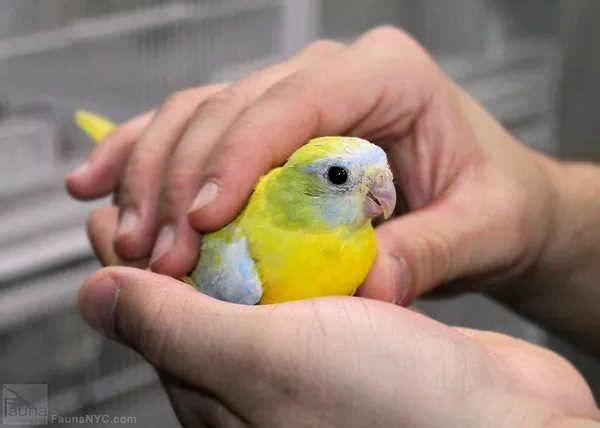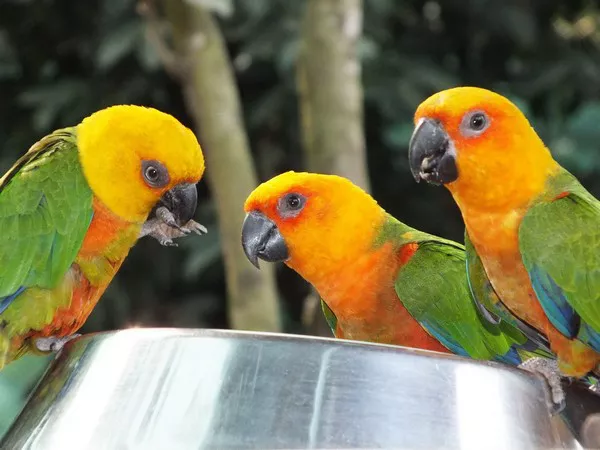Indian Ring-Necked Parrots, scientifically known as Psittacula krameri manillensis, are a captivating and intelligent bird species native to South Asia. Their vibrant plumage and engaging personalities have made them a popular choice among bird enthusiasts and pet owners. One intriguing question that arises in the context of caring for these parrots is whether they can be kept free-range, allowing them to enjoy a more natural and unrestricted environment. In this article, we will explore the concept of keeping Indian Ring-Necked Parrots free-range, the considerations involved, and the potential benefits and challenges of such an approach.
Understanding Indian Ring-Necked Parrots
Indian Ring-Necked Parrots are medium-sized parrots known for their distinctive ring-like markings around their necks. These birds are intelligent, social, and known for their impressive vocal abilities, often mimicking a variety of sounds, including human speech.
Native to a wide range of habitats in South Asia, Indian Ring-Necked Parrots are adaptable birds that can thrive in diverse environments, from tropical rainforests to urban areas. Their diet primarily consists of fruits, nuts, seeds, and vegetation.
Considering Free-Range Living for Indian Ring-Necked Parrots
Keeping Indian Ring-Necked Parrots free-range is an idea that appeals to many bird lovers. However, several important factors must be taken into account when considering this approach:
Climate and Habitat Compatibility:
Indian Ring-Necked Parrots are adaptable, but their ability to live free-range may be influenced by climate and habitat. Consider whether your local climate and environment are suitable for these parrots. They are more likely to thrive in regions with a climate similar to their native habitat.
Predators and Safety:
Predators pose a significant threat to free-range parrots. Indian Ring-Necked Parrots can fall victim to birds of prey, snakes, and even domesticated animals. Ensuring their safety from potential threats is a critical consideration.
Food and Foraging:
In a free-range setting, parrots will rely on natural foraging for food. Ensure that the area provides an adequate supply of the fruits, nuts, and vegetation that make up their diet. You may also need to supplement their diet to ensure they receive essential nutrients.
Social Interaction:
Indian Ring-Necked Parrots are social birds that thrive on interaction with their human caregivers and fellow parrots. Consider how you will provide them with social stimulation and companionship in a free-range environment.
Training and Recall:
Training your parrot for recall is essential if you plan to let them roam freely outdoors. Recall training involves teaching the parrot to return to you when called, which can help keep them safe.
Benefits of Free-Range Living
Keeping Indian Ring-Necked Parrots free-range can offer several potential benefits:
Natural Behavior: In a free-range setting, parrots can exhibit more natural behaviors, including foraging for food, flying, and exploring their environment.
Physical Exercise: Free-range parrots have the opportunity for increased physical activity, which can contribute to their overall health and well-being.
Enhanced Mental Stimulation: A varied outdoor environment can provide mental stimulation through exposure to new sights, sounds, and experiences.
Challenges of Free-Range Living
However, there are also challenges associated with free-range living for Indian Ring-Necked Parrots:
Safety Concerns: Predators, adverse weather conditions, and potential hazards in the environment pose significant safety concerns.
Dietary Considerations: Ensuring that the parrots have access to a balanced diet and clean water sources can be challenging.
Social Interaction: Maintaining social interaction and companionship, especially if the parrots are not in close proximity to humans, can be a challenge.
Conclusion
Keeping Indian Ring-Necked Parrots free-range is an intriguing idea that aligns with their natural behaviors and adaptability. However, it also comes with significant responsibilities and considerations related to climate, safety, diet, social interaction, and training.
If you decide to embark on the journey of providing a free-range environment for your Indian Ring-Necked Parrots, it’s essential to create a safe and stimulating environment that closely mirrors their natural habitat. Additionally, ensure that you are prepared to meet their physical, emotional, and dietary needs to help them thrive in their new living arrangement.
Recommended reading:
























